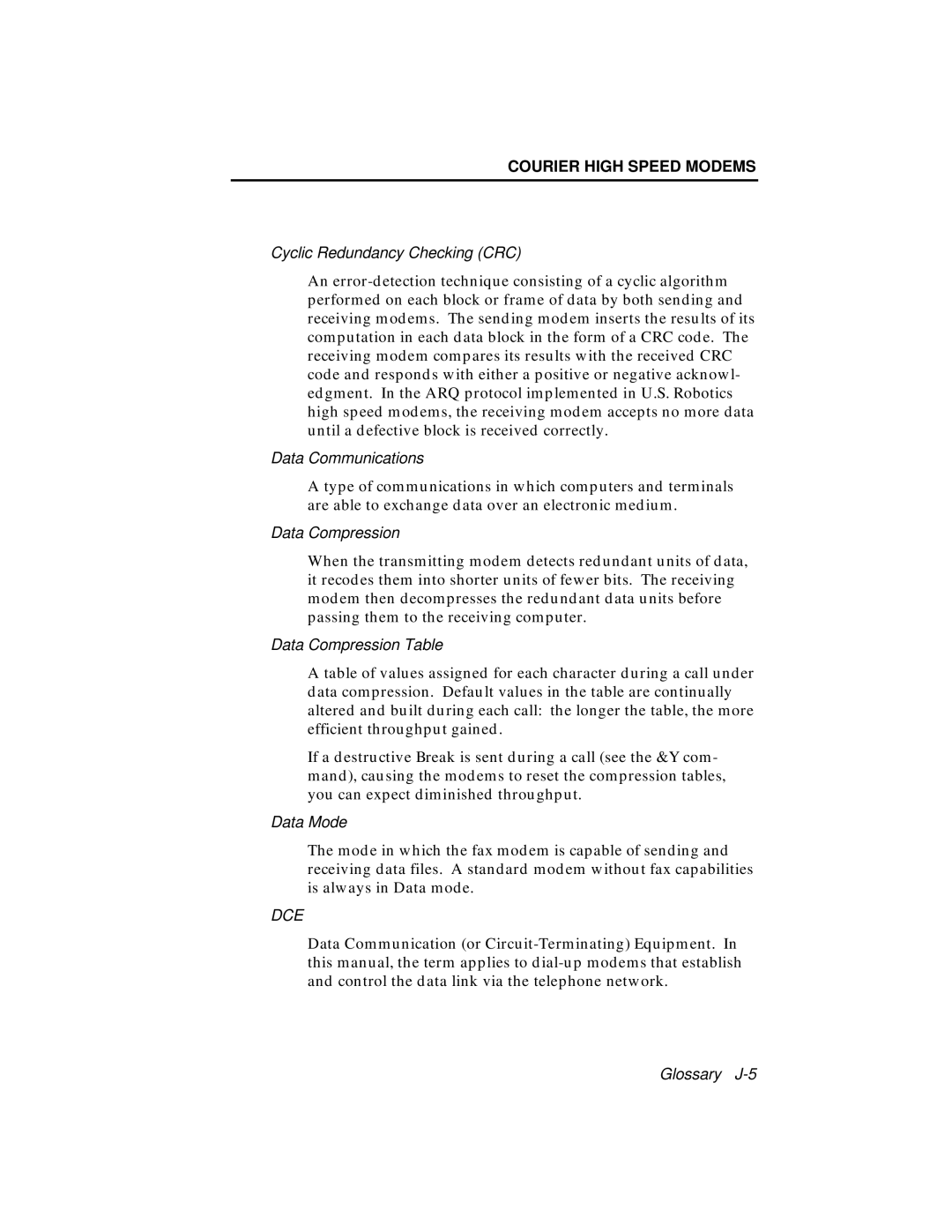COURIER HIGH SPEED MODEMS
Cyclic Redundancy Checking (CRC)
An
Data Communications
A type of communications in which computers and terminals are able to exchange data over an electronic medium.
Data Compression
When the transmitting modem detects redundant units of data, it recodes them into shorter units of fewer bits. The receiving modem then decompresses the redundant data units before passing them to the receiving computer.
Data Compression Table
A table of values assigned for each character during a call under data compression. Default values in the table are continually altered and built during each call: the longer the table, the more efficient throughput gained.
If a destructive Break is sent during a call (see the &Y com- mand), causing the modems to reset the compression tables, you can expect diminished throughput.
Data Mode
The mode in which the fax modem is capable of sending and receiving data files. A standard modem without fax capabilities is always in Data mode.
DCE
Data Communication (or
Glossary
